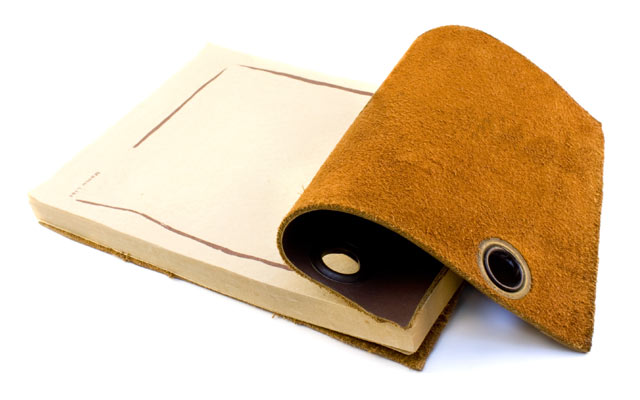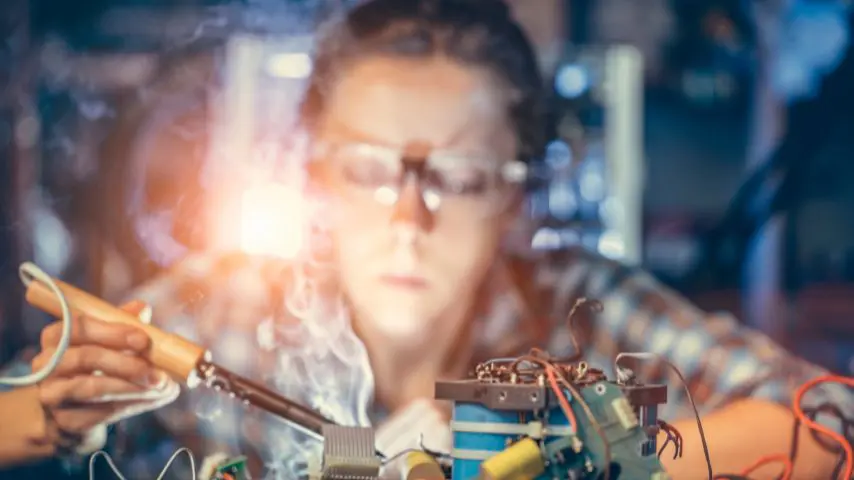My Engineer’s Notebook: Dylon Rockwell
My Engineer’s Notebook: Dylon Rockwell


ASME member Dylon Rockwell is an airframe design and integration engineer at the Boeing Company in Ridley, Pa., where he serves as a principal investigator for manufacturing technologies. After joining Boeing in 2011, Dylon was assigned to the V-22 Osprey tiltrotor aircraft program. The V-22 combines the vertical performance of a helicopter with the speed and range of a fixed-wing aircraft, is used primarily in cargo and crew delivery. After receiving training in variation analysis software, Dylon went on to perform analysis for Boeing’s Crew Space Transportation (CST-100) Starliner, Space Launch System and Sikorsky Boeing SB>1 Defiant programs to quantify and mitigate assembly risk. A member of ASME since 2013, Dylon is a new member of the Society’s Y14.46 Committee Support Group. He received a bachelor’s degree in aeronautics and astronautics engineering from Massachusetts Institute of Technology in 2011, and a master’s degree in systems engineering from Georgia Institute of Technology in 2015.
What's inside your engineer's notebook?
My notebook contains thoughts on structural designs and manufacturing processes, primarily as they pertain to work. For instance, it includes notes on different types of casting and forging techniques and various polymer- and composite-joining techniques.
Whose notebook would you most like to peek into? Why?
I think I would pick Robert L. Pinckney. He was the pioneer of the V-22 composite aft fuselage, which was constructed using automated fiber placement in the early 1990s. He was an engineer with a vision who executed it.
How and when did you know you wanted to become an engineer?
It was when I began thinking about high school and I applied to the Science and Engineering Magnet in Dallas. I think that’s around the time I realized what an engineer actually was. I’ve been tinkering with stuff since I was little, and always enjoyed math and science. But that was the time when someone actually told me what I was interested in was engineering.
What's the most exciting project you've ever worked on?
I would have to say that supporting the V-22 reliability initiative was the most exciting project, because we were really able to make an impact for our customers. They were constantly having to replace the V-22 fittings due to low reliability of the part. My task was to improve the reliability of the component. So, I had to opportunity to address an issue that had a real impact on the customer, who now doesn’t have to replace the part constantly.
What do you think you'd be doing if you hadn't become an engineer?
I think I would probably be in the hospitality industry. I really enjoy planning different kind of events. I did a lot of event planning in college. And I would call myself a ‘people person.’ So I think hospitality is an area that I would have gravitated toward. Probably not hospitality as in hotel management, but rather event planning for a city or general event planning.
What's your favorite activity when you're not working?
I’ve recently gotten into dancing. One of my friends suggested that I try it, and I said, ‘Why not?’ I enjoy the pulse of salsa and bachata music and exhilarating movements of the dance. I really got into it. It’s something I do after work.
Was there a book or a movie that piqued your interest in science or inspired you to become an engineer?
Well before I knew what engineering was, I read several books on space exploration that piqued my interest in engineering. I can't recall the titles, though.
Who are your heroes, either within the engineering profession or in the rest of your life?
My elementary school was named after Dr. Ronald E. McNair, a physicist and an astronaut, who passed away in the Challenger accident. While in elementary school, I learned about him through second hand accounts, but when I attended MIT, I met several alumni who knew him. His contemporaries talked about how gracious he was with his time as he taught them physics, ensuring they were able to excel as he has.
What's the most meaningful or rewarding aspect of being connected to engineering?
I would say that because I’m an engineer and have a network of other engineers around me, that when things come out I hear about them first. Someone has a new app, for instance, and they’re looking for someone to try it out. I tend to be that guinea pig. So I’ve become an early adopter. Alternatively, I’m an engineer, so I also have to opportunity to create different things. I think those are probably the biggest benefits of being an engineer.
What does ASME mean to you?
ASME means sharing solutions to engineering problems through standards and other media for the advancement of the global engineering community. I am now participating on one of the standards committees for ASME Y14.46 because I feel it is very important to be personally involved in this knowledge sharing. I was also recently certified for the ASME Y14.5 standard. From a career development aspect, that certification lets people know that I took this extra step to show that I know what I’m talking about when it comes to GD&T (geometric dimensioning and tolerancing).
I would say that because I’m an engineer and have a network of other engineers around me, that when things come out I hear about them first.Dylon Rockwell



